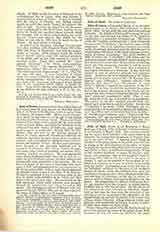

John of Genoa (often called BALBI, or DE BALBIS), grammarian; b. at Genoa, date unknown; d. there about 1298. Of his early life and education nothing is known. He distributed his wealth among the poor of the city, and entered the Order of St. Dominic, apparently at a somewhat advanced age. His noted work, the “Summa Grammaticalis”, more commonly known as the “Catholicon”, has made his name widely celebrated. The work comprises treatises on orthography, etymology, grammar, prosody, rhetoric, and an etymological dictionary of the Latin language (primae, mediae et infimae Latinitatis). The great number of MSS. in which the “Catholicon” still exists, and the numerous editions through which it passed during the first seventy-five years after the invention of printing, attest the wide acceptance accorded it and the popularity it long enjoyed. For more than a century it was highly esteemed as a textbook. It has been the subject at once of excessive criticism and excessive praise. Erasmus, the most conspicuous of its critics, speaks of it in caustic terms in his “De Ratione Studiorum” and “Colloquia”. Leander Alberti (“Viri Illustres Ord. Praed.” and “Discrittione di tutta Italia”) defends it against the aspersions of the humanist. If we bear in mind the materials the author had at his disposal, the purpose of the work, and the needs of the time, it must be conceded that the “Catholicon” possessed considerable merit. That it met the demands of the age is attested by its popularity. The author by his own assertion refuted those who would have made him an adept in Greek. Besides the “Catholicon”, he wrote “Liber Theologiae qui vocatur Dialogus de Quaestionibus Animae ad Spiritum” and “Quoddam opus ad inveniendum festa mobilia”. A “Postilla super Joannem” and a “Tractatus de Omnipotentia Dei” are also attributed to John of Genoa.
VICTOR F. O’DANIEL

